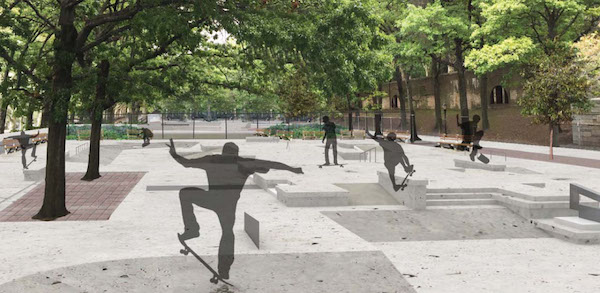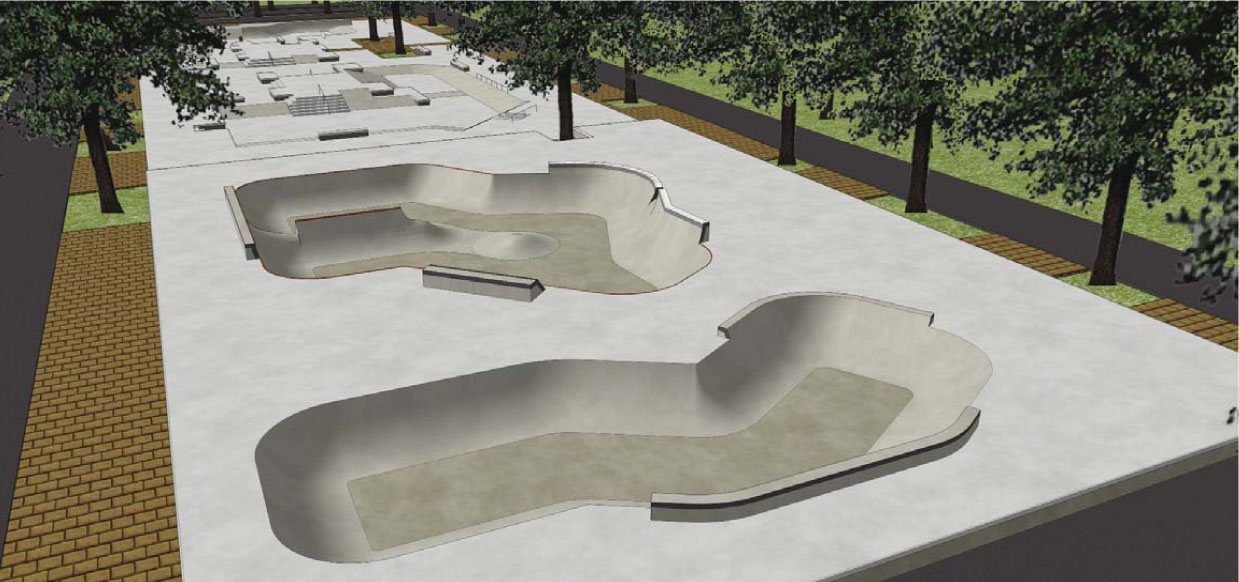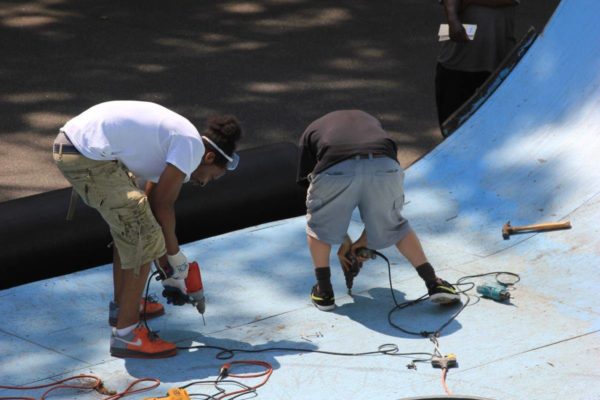
BY JACKSON CHEN | A coalition of Upper West Side skateboarders is calling on the city’s Department of Parks and Recreation to incorporate more of their input into its redesign of their beloved Riverside Skate Park.
The wooden skate park was constructed in 1996 at West 108th Street inside Riverside Park, which is one of only eight designated scenic landmarks within the city. But the skate park itself is also widely considered historically significant – at least among area skaters – having been built by Andy Kessler, a prominent figure in New York City skateboarding who paved the way for the sport’s growth locally.
At a time when the ranks of skaters numbered perhaps only in the dozens, Kessler forged a relationship with the parks department to create the Riverside Skate Park, one of the first in New York City. After years of wear-and-tear on the wood structures, local skaters joined together to maintain the park and restore its many original sky-blue ramps.
But the parks department has now come to skateboard enthusiasts with a new modernized concrete design and a budget of $1.8 million.
The plans, designed by the firm of W Architecture and Landscape Architecture, were presented to the skateboarding community on May 14 and two days later to Community Board 7’s Parks and Environment Committee.
According to the design, roughly 60 percent of the park would be dedicated to street skating — a category where skaters grind, slide, and jump down various obstacles, with the remaining area used for vert skating, a style in which skaters fly in and out of a bowl, pool, or half pipes.

After seeing the parks department’s proposal, local skaters said the modern design is a far stretch from Riverside Skate Park’s humble roots – and loses a lot of what makes it a very special place. The current design attracts skaters of different skill levels because of the varying heights of its U-shaped ramps – three, six, and nine-to-10-feet –– that skaters pump up and down on.
“They’re thoughtlessly paving over an historically vert mecca,” said John O’Malley, who helped out with maintenance efforts in the park in 2013. “The new design is just a watered-down street plaza and a couple kiddie pools to replace the vert ramps.”
The two pools in the proposed design have ramps of only six feet.
O’Malley, who designed the first skate park in the world in Carlsbad, California, said the proposed design was not well-researched and excluded feedback from vert skateboarders.
As street skating has begun overshadowing the more traditional vert skating in popularity, modern skate parks have reflected the change, with street skating plazas now open in Tribeca, on the Lower East Side, and in Washington Heights.
There’s a scarcity of vert skate parks throughout the city, O’Malley said, a situation that could have been addressed with the Riverside redesign.
Ian Clarke, who runs the skater coalition and managed repairs at the skate park in 2012, 2013, and 2014, credited the parks department with good intentions, but said it is missing an opportunity to create a world-class skate park for the vert community.

With less than half the park available to vert skating, he said, Riverside Skate Park would lose its main draw: a three-tiered system of ramp heights that allows skaters to progress as they build their skills. Clarke explained that skaters looking to improve their vert skills can start out on the micro mini ramp, with its highest point at three-and-a-half feet. Once they’ve build up their confidence, they move on to the six-foot alternative before advancing to the biggest vert ramp, measuring nine feet tall with 10-feet extensions.
Ideally, he said, the parks department would start from scratch with a new design. A possible compromise, he suggested, would be for the architects to replace one of the bowls in the new design with a deeper 11-foot bowl as a challenge for vert skaters.
According to Clarke, however, parks officials were not very receptive to their concerns.
“We really made our efforts to communicate with them,” he said. “But they were frosty and pretty much ignored what we wanted.”
According to a parks department spokesperson, “NYC Parks is excited about providing a re-envisioned skate park to Riverside Park skateboarders that takes into consideration a wide range of usership and skating skills.”
The project is currently being reviewed by the city’s Landmarks Preservation Commission as well as its Public Design Commission. It is due for a full board vote at CB7 on June 7.
Upper West Side skaters, who feel like they’ve been left out of the decision-making process to date, continue to hold out hope that the new design can be reformulated to stay true to the park’s original layout and mission.
“For $1.8 million, this should not be something you shake your head at and roll your eyes,” Clarke said. “If we took the time to do it correctly with the architects, the local community board, we could have something that the neighborhood and skaters are happy with.”






























